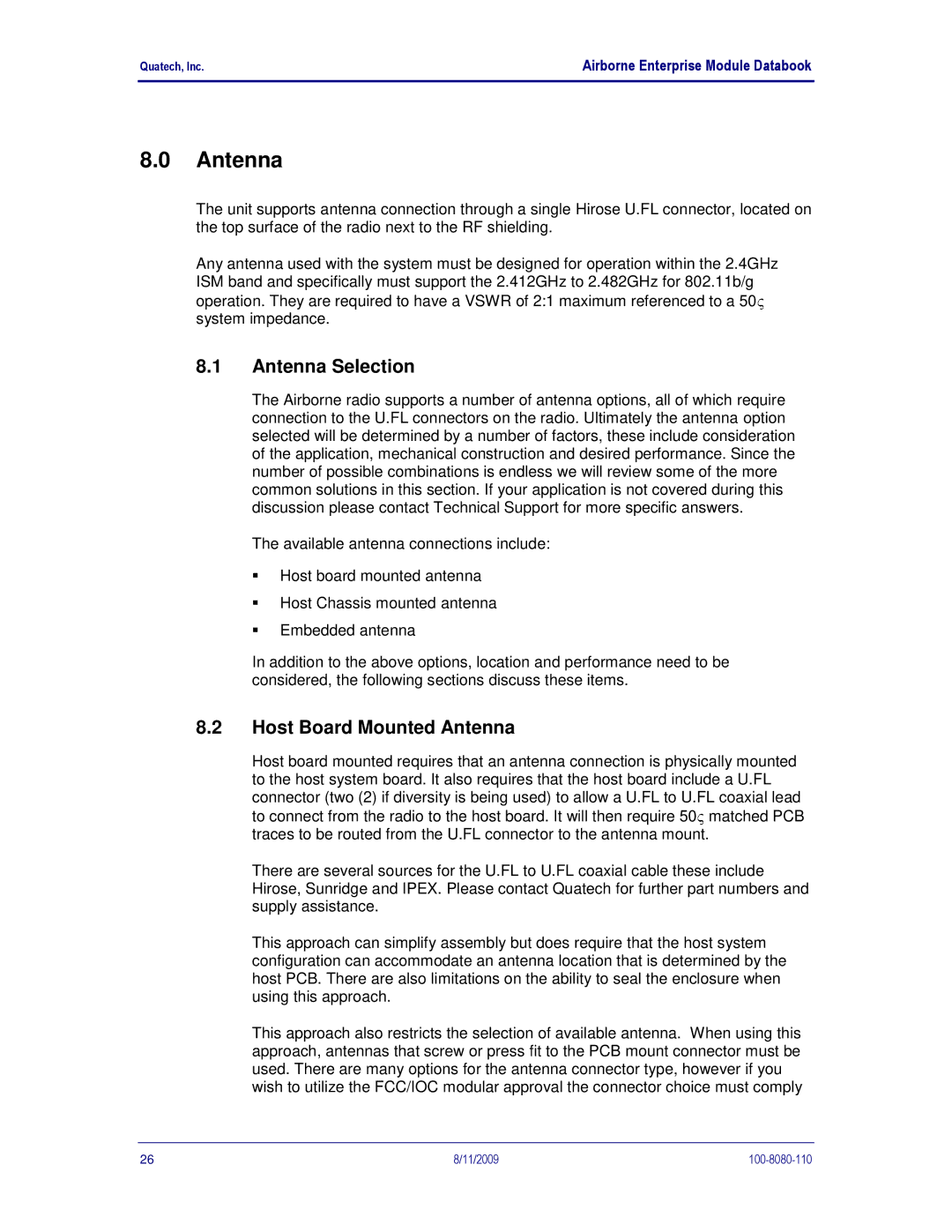802.11B/G specifications
Quatech 802.11B/G is a versatile wireless communication solution that has gained recognition for its reliability and performance in various industrial applications. Designed primarily for the industrial automation sector, this product offers robust connectivity and data transmission capabilities over Wi-Fi networks.One of the standout features of the Quatech 802.11B/G is its compliance with the IEEE 802.11b and 802.11g standards. This ensures compatibility with a wide range of devices, enabling seamless integration into existing networks. The device supports data rates of up to 54 Mbps in the 802.11g mode, which is essential for applications that require quick and efficient data transfer.
In terms of technology, Quatech employs advanced wireless communication protocols that ensure a stable connection and minimize data loss. This is particularly important in industrial settings, where interruptions can result in costly downtime. The device utilizes error correction and encryption techniques to maintain the integrity and security of data being transmitted over the air.
Another important characteristic of the Quatech 802.11B/G is its operational range. The device can maintain a reliable connection across a significant distance, depending on the environmental conditions. This feature is crucial for applications that involve monitoring and control in large facilities, warehouses, or outdoor settings.
Power consumption is another critical aspect of the Quatech 802.11B/G design. The device is engineered for energy efficiency, making it suitable for applications where power resources may be limited. This feature allows for extended operational life in battery-powered devices without sacrificing performance.
The Quatech 802.11B/G is also equipped with multiple interfaces, including serial and Ethernet ports, facilitating easy connectivity with a wide array of devices. This versatility supports integration with various industrial equipment, sensors, and controllers, making the device highly adaptable to different environments.
Furthermore, the Quatech 802.11B/G is designed with durability in mind. It is built to withstand harsh conditions typical of industrial settings, ensuring long-lasting functionality and reducing the need for frequent maintenance or replacements.
In conclusion, the Quatech 802.11B/G offers a reliable and efficient wireless connectivity solution for industrial applications. Its compliance with industry standards, advanced communication protocols, extensive operational range, energy efficiency, and robust design make it a preferred choice for businesses looking to enhance their operational capabilities.

